Linux Top Command
1. Display of Top Command
In this example, it will show information like tasks, memory, cpu and swap. Press ‘q‘ to quit window.
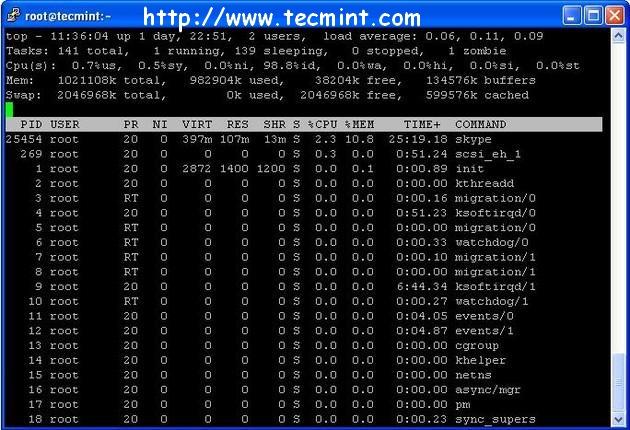
Linux Top Command
2. Sorting with -O (Uppercase Letter ‘O’).
Press (Shift+O) to Sort field via field letter, for example press ‘a‘ letter to sort process with PID (Process ID).
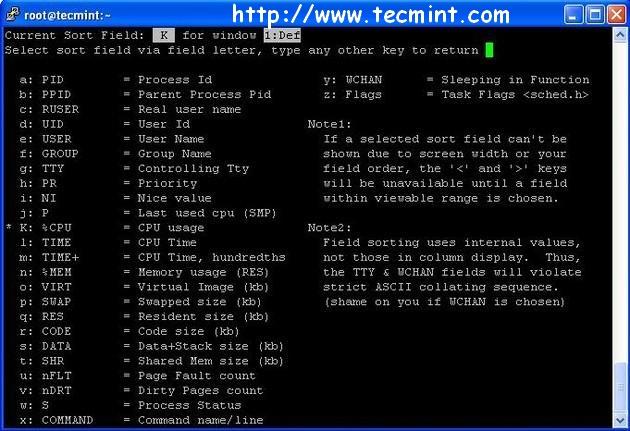
Sorting Process ID’s with Top
Type any key to return to main top window with sorted PID order as shown in below screen. Press ‘q‘ to quit exit the window.
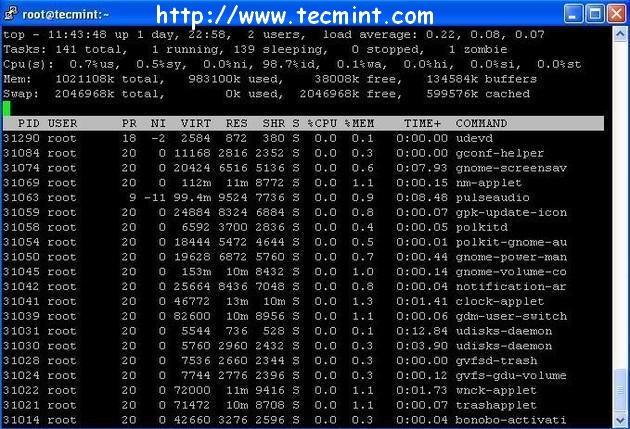
Sorting Process ID’s
3. Display Specific User Process
Use top command with ‘u‘ option will display specific User process details.
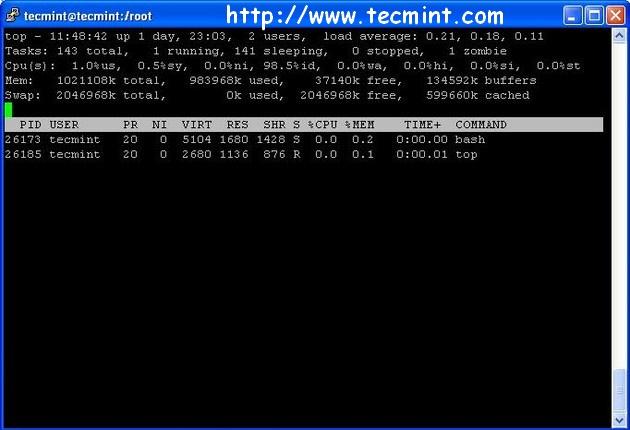
Top with Specific User Processes
4. Highlight Running Process in Top
Press ‘z‘ option in running top command will display running process in color which may help you to identified running process easily.
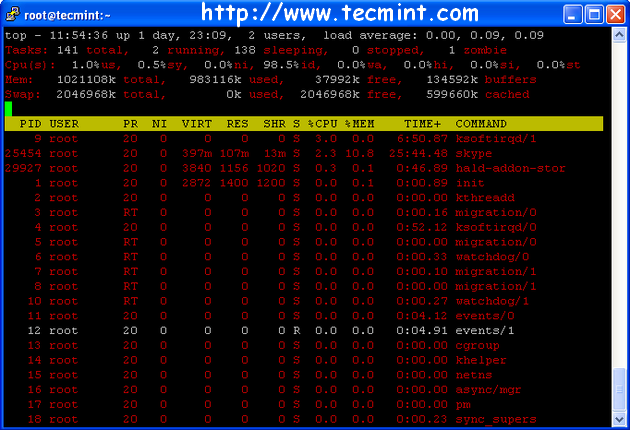
Top Process with Colorful
5. Shows Absolute Path of Processes
Press ‘c‘ option in running top command, it will display absolute path of running process.
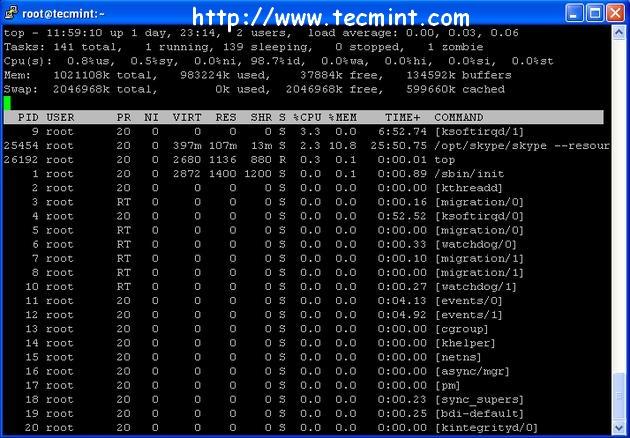
Top with Specific Process Path
6. Change Delay or Set ‘Screen Refresh Interval’ in Top
By default screen refresh interval is 3.0 seconds, same can be change pressing ‘d‘ option in running top command and change it as desired as shown below.
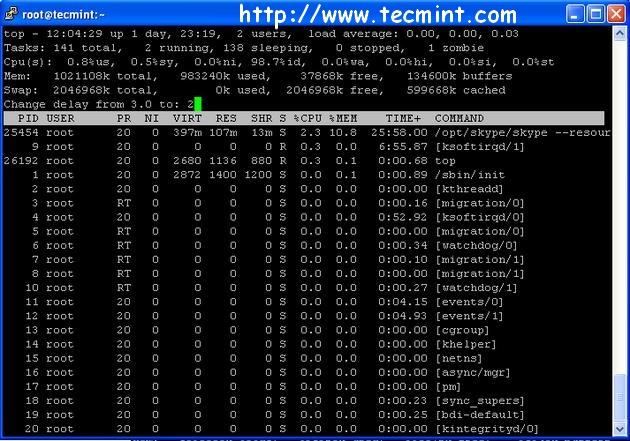
Top – Set Refresh Time
7. Kill running process with argument ‘k’
You can kill a process after finding PID of process by pressing ‘k‘ option in running top command without exiting from top window as shown below.
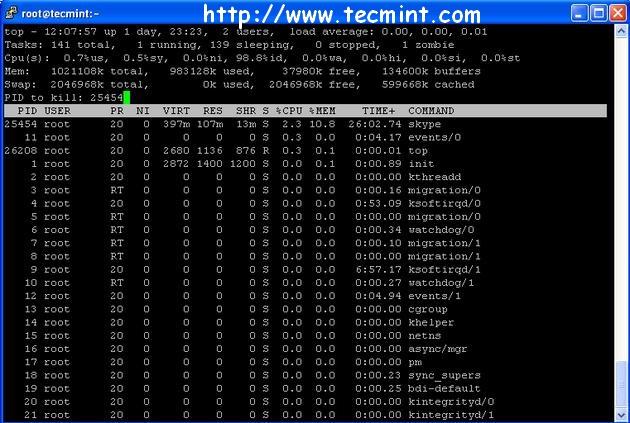
Top – Kill Process ID
8. Sort by CPU Utilisation
Press (Shift+P) to sort processes as per CPU utilization. See screenshot below.
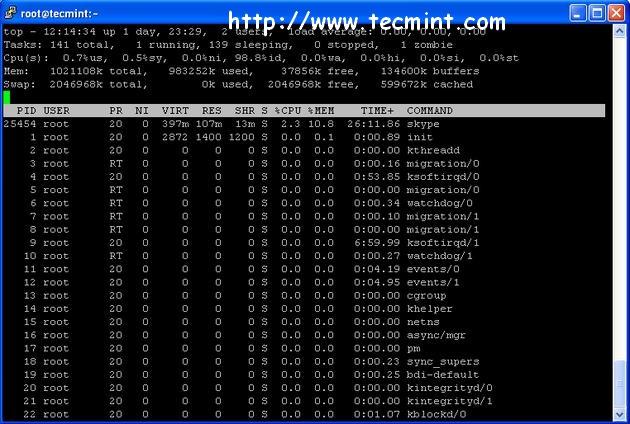
Top – High CPU Utilization
9. Renice a Process
You can use ‘r‘ option to change the priority of the process also called Renice.
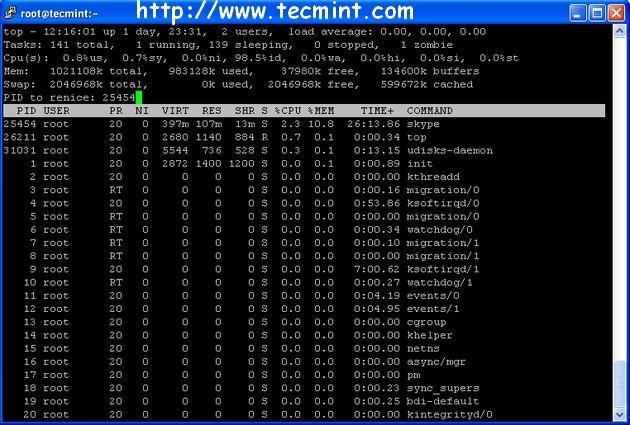
Top – Renice Process
10. Save Top Command Results
Press (Shift+W) to save the running top command results under /root/.toprc.
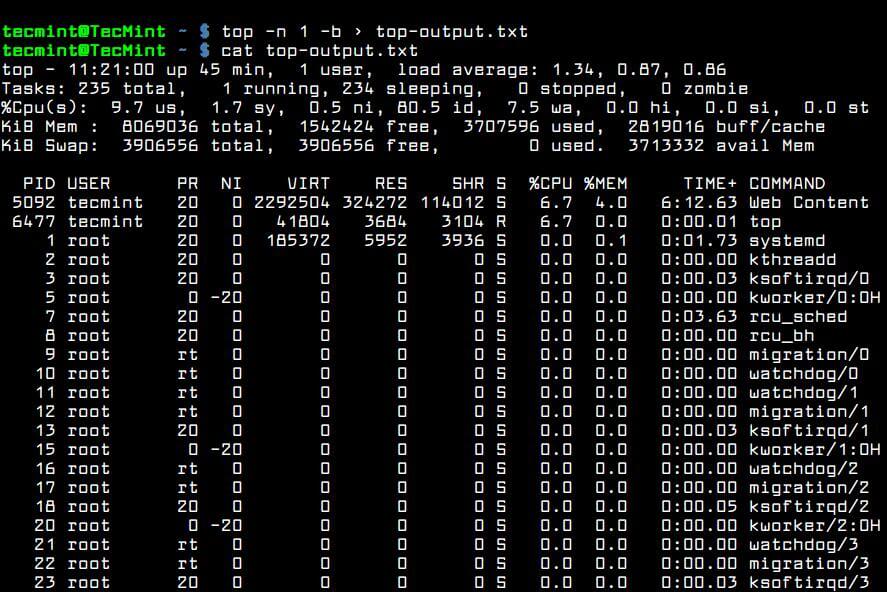
Top Command Save Results
11. Getting Top Command Help
Press ‘h‘ option to obtain the top command help.
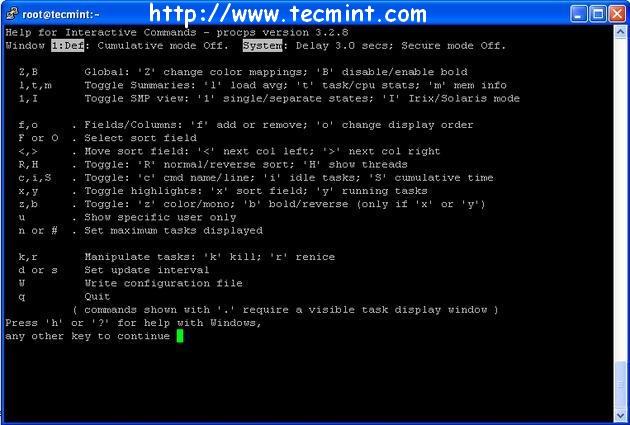
Top Command Help
12. Exit Top Command After Specific repetition
Top output keep refreshing until you press ‘q‘. With below command top command will automatically exit after 10 number of repetition.
There are number of arguments to know more about top command you may refer man page of top command. Please share it if you find this article useful through our comment box below.
Comments
Post a Comment